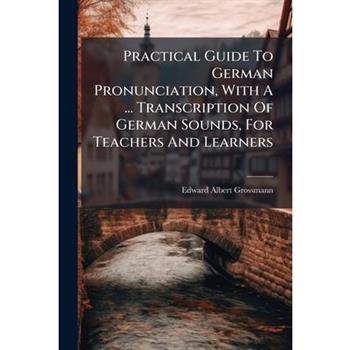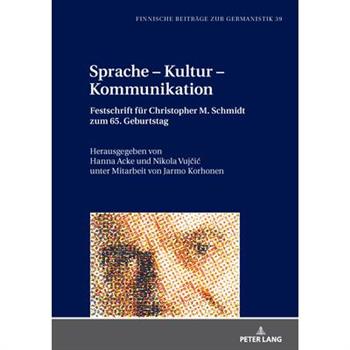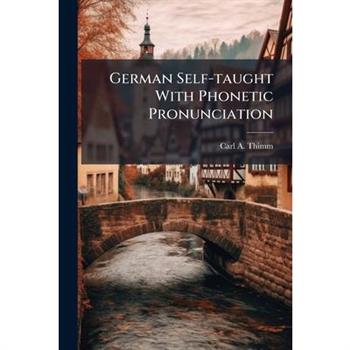Sprache - Kultur - Kommunikation; Festschrift f羹r Christopher Schmidt zum 65. Geburtstag
In einer Welt, die zunehmend von globalen Interaktionen und kulturellem Austausch gepr瓣gt ist, bleibt die Bedeutung von Sprache, Kultur und Kommunikation zentral. Diese Festschrift zu Ehren von Christopher M. Schmidt vereint 23 Beitr瓣ge, die das breite Spektrum der Sprach-, Kultur- und Kommunikationswissenschaft abdecken. Christopher M. Schmidts Wegbegleiter*innen, Sch羹ler*innen und Kolleg*innen - Wissenschaftler*innen aus vielen Teilen Europas - pr瓣sentieren tiefgehende Analysen, interkulturelle Studien und beleuchten Theorien der Wirtschaftskommunikation. Der Band spiegelt die Vielfalt und den Reichtum der Forschungsfelder wider, die Christopher M. Schmidt im Laufe seiner Karriere ma?geblich gepr瓣gt hat. Die Festschrift bietet wertvolle Einblicke und Anregungen f羹r alle, die sich mit den Wechselwirkungen von Sprache, Kultur und Kommunikation auseinandersetzen wollen. Wir laden Sie ein, die facettenreichen Beitr瓣ge in diesem einzigartigen Sammelband zu entdecken.
German Self-taught With Phonetic Pronunciation
"German Self-Taught" is a comprehensive guide designed for individuals seeking to learn German independently. Authored by Carl A. Thimm, this book focuses on providing a practical and accessible approach to mastering the German language. This book places special emphasis on phonetic pronunciation, enabling learners to accurately speak and understand German from the outset. Covering essential grammar rules and vocabulary, it equips readers with the foundational knowledge needed for effective communication. Whether for travel, business, or personal enrichment, "German Self-Taught" offers a structured and user-friendly path to fluency. Its enduring appeal lies in its straightforward methodology, making it an invaluable resource for anyone embarking on a journey to learn German.This work has been selected by scholars as being culturally important, and is part of the knowledge base of civilization as we know it. This work was reproduced from the original artifact, and remains as true to the original work as possible. Therefore, you will see the original copyright references, library stamps (as most of these works have been housed in our most important libraries around the world), and other notations in the work.This work is in the public domain in the United States of America, and possibly other nations. Within the United States, you may freely copy and distribute this work, as no entity (individual or corporate) has a copyright on the body of the work.As a reproduction of a historical artifact, this work may contain missing or blurred pages, poor pictures, errant marks, etc. Scholars believe, and we concur, that this work is important enough to be preserved, reproduced, and made generally available to the public. We appreciate your support of the preservation process, and thank you for being an important part of keeping this knowledge alive and relevant.
Conversation in German on a Grammatical Basis
"Conversation in German on a Grammatical Basis" offers a structured approach to learning conversational German, emphasizing grammatical principles. Designed for students and independent learners alike, this book provides a foundation in German grammar while fostering practical communication skills. Through carefully crafted lessons and exercises, Hermann Carl Otto Huss enables readers to develop fluency and accuracy in spoken German. This book remains a valuable resource for anyone seeking a solid understanding of German grammar and the ability to engage in meaningful conversations.This work has been selected by scholars as being culturally important, and is part of the knowledge base of civilization as we know it. This work was reproduced from the original artifact, and remains as true to the original work as possible. Therefore, you will see the original copyright references, library stamps (as most of these works have been housed in our most important libraries around the world), and other notations in the work.This work is in the public domain in the United States of America, and possibly other nations. Within the United States, you may freely copy and distribute this work, as no entity (individual or corporate) has a copyright on the body of the work.As a reproduction of a historical artifact, this work may contain missing or blurred pages, poor pictures, errant marks, etc. Scholars believe, and we concur, that this work is important enough to be preserved, reproduced, and made generally available to the public. We appreciate your support of the preservation process, and thank you for being an important part of keeping this knowledge alive and relevant.
English Into German
English Into German, subtitled German Composition; or, English Prose Specimens to be Translated Into German, is a classic text designed to aid English speakers in mastering German composition. Originally published in 1873, this book offers a structured approach to language acquisition through practical translation exercises. Compiled by Anton Leopold Becker and Alfred G Havet, the book provides a series of English prose passages intended for translation into German, offering invaluable practice in grammar, vocabulary, and idiomatic expressions. Suitable for both classroom use and self-study, "English Into German" remains a valuable resource for students and enthusiasts seeking to develop proficiency in German. Its enduring appeal lies in its clear structure and focus on practical application, making it an essential tool for anyone serious about mastering the nuances of German prose composition.This work has been selected by scholars as being culturally important, and is part of the knowledge base of civilization as we know it. This work was reproduced from the original artifact, and remains as true to the original work as possible. Therefore, you will see the original copyright references, library stamps (as most of these works have been housed in our most important libraries around the world), and other notations in the work.This work is in the public domain in the United States of America, and possibly other nations. Within the United States, you may freely copy and distribute this work, as no entity (individual or corporate) has a copyright on the body of the work.As a reproduction of a historical artifact, this work may contain missing or blurred pages, poor pictures, errant marks, etc. Scholars believe, and we concur, that this work is important enough to be preserved, reproduced, and made generally available to the public. We appreciate your support of the preservation process, and thank you for being an important part of keeping this knowledge alive and relevant.
An Introduction to German
An Introduction to German, originally published in 1911, is a comprehensive textbook designed for students beginning their study of the German language. Written by Eduard Prokosch, a noted linguist, this book provides a thorough grounding in German grammar, vocabulary, and pronunciation. The text emphasizes a systematic approach to language learning, with clear explanations and numerous exercises to reinforce understanding. This volume includes detailed lessons on German sentence structure, verb conjugations, noun declensions, and idiomatic expressions. Suitable for classroom use or self-study, An Introduction to German remains a valuable resource for anyone seeking to master the fundamentals of the German language.This work has been selected by scholars as being culturally important, and is part of the knowledge base of civilization as we know it. This work was reproduced from the original artifact, and remains as true to the original work as possible. Therefore, you will see the original copyright references, library stamps (as most of these works have been housed in our most important libraries around the world), and other notations in the work.This work is in the public domain in the United States of America, and possibly other nations. Within the United States, you may freely copy and distribute this work, as no entity (individual or corporate) has a copyright on the body of the work.As a reproduction of a historical artifact, this work may contain missing or blurred pages, poor pictures, errant marks, etc. Scholars believe, and we concur, that this work is important enough to be preserved, reproduced, and made generally available to the public. We appreciate your support of the preservation process, and thank you for being an important part of keeping this knowledge alive and relevant.
An Introduction to German
An Introduction to German, originally published in 1911, is a comprehensive textbook designed for students beginning their study of the German language. Written by Eduard Prokosch, a noted linguist, this book provides a thorough grounding in German grammar, vocabulary, and pronunciation. The text emphasizes a systematic approach to language learning, with clear explanations and numerous exercises to reinforce understanding. This volume includes detailed lessons on German sentence structure, verb conjugations, noun declensions, and idiomatic expressions. Suitable for classroom use or self-study, An Introduction to German remains a valuable resource for anyone seeking to master the fundamentals of the German language.This work has been selected by scholars as being culturally important, and is part of the knowledge base of civilization as we know it. This work was reproduced from the original artifact, and remains as true to the original work as possible. Therefore, you will see the original copyright references, library stamps (as most of these works have been housed in our most important libraries around the world), and other notations in the work.This work is in the public domain in the United States of America, and possibly other nations. Within the United States, you may freely copy and distribute this work, as no entity (individual or corporate) has a copyright on the body of the work.As a reproduction of a historical artifact, this work may contain missing or blurred pages, poor pictures, errant marks, etc. Scholars believe, and we concur, that this work is important enough to be preserved, reproduced, and made generally available to the public. We appreciate your support of the preservation process, and thank you for being an important part of keeping this knowledge alive and relevant.
Progressive German Composition
"Progressive German Composition" by Louis Lubovius offers a comprehensive guide to mastering the German language, with a special emphasis on composition skills. This book provides copious notes and idioms to enrich the student's understanding. The book also features an early introduction to German philology, enriching the reader璽€(TM)s appreciation of the language璽€(TM)s historical and structural foundations. It is an invaluable resource for students aiming for proficiency in written German.This work has been selected by scholars as being culturally important, and is part of the knowledge base of civilization as we know it. This work was reproduced from the original artifact, and remains as true to the original work as possible. Therefore, you will see the original copyright references, library stamps (as most of these works have been housed in our most important libraries around the world), and other notations in the work.This work is in the public domain in the United States of America, and possibly other nations. Within the United States, you may freely copy and distribute this work, as no entity (individual or corporate) has a copyright on the body of the work.As a reproduction of a historical artifact, this work may contain missing or blurred pages, poor pictures, errant marks, etc. Scholars believe, and we concur, that this work is important enough to be preserved, reproduced, and made generally available to the public. We appreciate your support of the preservation process, and thank you for being an important part of keeping this knowledge alive and relevant.
Learn German with Every Man Dies Alone Part I
Best way to learn German by readingLearn German with the first part of the famous novel Jeder stirbt f羹r sich allein or Every man dies alone, an intense story about a simple German worker couple who stand up to Hitler. The best way to learn German just by reading. No need to look up words with our interlinear material! We have added a word for word interlinear translation to the German text. This means that the meaning of every German word is immediately accessible, which in turn will make it much easier for you to expand your German vocabulary fast. How to learn German with this bookUse the following method to learn German vocabulary fast and easy. Read the stories and re-read them until you know almost all the words. This is a fast process because there's no lookup time. Then focus on the remaining words that you still don't know by marking those in the text or noting their pages. Because of the literal and idiomatic interlinear text this is the best way to learn German reading fast. Also, contact us on shop.hyplern.com for non-translated pdf versions of this book with which you can practice reading German without the interlinear translation. The same goes for the mp3s that go with the text. The best app to learn German is also available for this book, HypLern Online. For import on Paperwhite, just ask us for a pdf once you bought the Kindle or Paperback version of this book. The HypLern project has been creating manually word-for-word translated language material since 2006. The aim of our project is to allow students to start reading the language of their choice immediately, and expand their vocabulary fast. Learn German from basics by reading from day one. Check out our HypLern interlinear Dutch, French, Russian, Spanish or other languages on Amazon as well!
German Exercises for Beginners
"German Exercises for Beginners" provides a comprehensive introduction to the German language. Designed for self-study or classroom use, this book, authored by Wilhelm Klauer Klattowsky, offers a practical approach to mastering fundamental German grammar and vocabulary. Through a series of carefully structured exercises, learners can build a solid foundation in the language, developing essential skills in reading, writing, and comprehension. This book is an invaluable resource for anyone starting their journey in learning German, offering clear explanations and ample opportunities for practice. It is suitable for independent learners and those taking formal German courses, providing a systematic way to progress from basic concepts to more advanced topics.This work has been selected by scholars as being culturally important, and is part of the knowledge base of civilization as we know it. This work was reproduced from the original artifact, and remains as true to the original work as possible. Therefore, you will see the original copyright references, library stamps (as most of these works have been housed in our most important libraries around the world), and other notations in the work.This work is in the public domain in the United States of America, and possibly other nations. Within the United States, you may freely copy and distribute this work, as no entity (individual or corporate) has a copyright on the body of the work.As a reproduction of a historical artifact, this work may contain missing or blurred pages, poor pictures, errant marks, etc. Scholars believe, and we concur, that this work is important enough to be preserved, reproduced, and made generally available to the public. We appreciate your support of the preservation process, and thank you for being an important part of keeping this knowledge alive and relevant.
A German Grammar for Beginners
"A German Grammar for Beginners" by Paul Valentine Bacon, originally published in 1912, offers a comprehensive introduction to the German language. Designed for students with little to no prior knowledge, this textbook provides a systematic approach to understanding German grammar. The book covers essential topics such as noun declensions, verb conjugations, sentence structure, and common idiomatic expressions. Through clear explanations and practical exercises, readers will develop a solid foundation in German grammar, enabling them to read, write, and speak with confidence. This accessible guide remains a valuable resource for anyone embarking on the journey of learning German.This work has been selected by scholars as being culturally important, and is part of the knowledge base of civilization as we know it. This work was reproduced from the original artifact, and remains as true to the original work as possible. Therefore, you will see the original copyright references, library stamps (as most of these works have been housed in our most important libraries around the world), and other notations in the work.This work is in the public domain in the United States of America, and possibly other nations. Within the United States, you may freely copy and distribute this work, as no entity (individual or corporate) has a copyright on the body of the work.As a reproduction of a historical artifact, this work may contain missing or blurred pages, poor pictures, errant marks, etc. Scholars believe, and we concur, that this work is important enough to be preserved, reproduced, and made generally available to the public. We appreciate your support of the preservation process, and thank you for being an important part of keeping this knowledge alive and relevant.
A German Grammar for Beginners
"A German Grammar for Beginners" by Paul Valentine Bacon, originally published in 1912, offers a comprehensive introduction to the German language. Designed for students with little to no prior knowledge, this textbook provides a systematic approach to understanding German grammar. The book covers essential topics such as noun declensions, verb conjugations, sentence structure, and common idiomatic expressions. Through clear explanations and practical exercises, readers will develop a solid foundation in German grammar, enabling them to read, write, and speak with confidence. This accessible guide remains a valuable resource for anyone embarking on the journey of learning German.This work has been selected by scholars as being culturally important, and is part of the knowledge base of civilization as we know it. This work was reproduced from the original artifact, and remains as true to the original work as possible. Therefore, you will see the original copyright references, library stamps (as most of these works have been housed in our most important libraries around the world), and other notations in the work.This work is in the public domain in the United States of America, and possibly other nations. Within the United States, you may freely copy and distribute this work, as no entity (individual or corporate) has a copyright on the body of the work.As a reproduction of a historical artifact, this work may contain missing or blurred pages, poor pictures, errant marks, etc. Scholars believe, and we concur, that this work is important enough to be preserved, reproduced, and made generally available to the public. We appreciate your support of the preservation process, and thank you for being an important part of keeping this knowledge alive and relevant.
Basic Words in German - Grundlegende W繹rter auf Deutsch - Volume 1
Introduce Your Child to German in a Fun, Easy Way!Basic Words in German - Grundlegende W繹rter auf Deutsch (Volume 1) is a bilingual picture book that turns learning German into playtime for children-and a breeze for grown-ups. This 40-page book presents everyday words with bright illustrations, shown in both English and German. Each German word also includes a child-friendly phonetic guide (e.g., "Auf Wiedersehen" - owf VEE-der-zay-en), so parents and kids can pronounce new words together with confidence!What's InsideMore than 50 essential words - animals, vehicles, colors, numbers, weather, foods, and more: the perfect starter German vocabulary.Bilingual layout - every page pairs the German word with its English meaning, letting pictures do the teaching.Pronunciation help - our simple phonetics are designed for English-speaking families; no prior German required.Vibrant illustrations - cheerful, full-color art keeps little learners engaged and helps them remember each word.Fun for kids & parents - read the German aloud together and watch your child light up when they spot der Zug (train) or die Erdbeere (strawberry)!Who Is This Book For?Perfect for English-speaking families eager to introduce a second language early. Parents, grandparents, and educators can spark a lifelong love of languages with children ages 2-5 (and curious baby siblings). Planning a trip to Germany or Austria? Use words like Hallo, Auf Wiedersehen, and Danke to greet everyone on vacation! The mix of familiar English context and clear German phonetics makes the book approachable for beginners and bilingual households alike.Lingolora Language LearnersBasic Words in German is part of the Lingolora series of bilingual picture books for kids. Continue the adventure with our French, Spanish, and Italian volumes-each one uses the same friendly format and playful style.Begin your child's German language journey today with this beautifully illustrated, easy-to-follow book.Lass uns Deutsch lernen! (Let's learn German!)
A Practical Guide to a Scientific Study of the German Vocabulary
"A Practical Guide to a Scientific Study of the German Vocabulary" by August Prehn, originally published in 1912, offers a comprehensive approach to understanding and mastering the German language. This guide delves into the intricacies of German vocabulary through structured methods designed to enhance language acquisition and retention. It explores various techniques for systematic study, catering to both students and educators. Prehn's work provides a detailed analysis of word formation, usage, and context, making it an invaluable resource for anyone seeking a deeper understanding of German. This edition retains the original insights while ensuring accessibility for modern readers. Whether you are a student aiming to improve your German proficiency or a teacher looking for effective pedagogical tools, this guide provides a solid foundation for a scientific approach to German vocabulary.This work has been selected by scholars as being culturally important, and is part of the knowledge base of civilization as we know it. This work was reproduced from the original artifact, and remains as true to the original work as possible. Therefore, you will see the original copyright references, library stamps (as most of these works have been housed in our most important libraries around the world), and other notations in the work.This work is in the public domain in the United States of America, and possibly other nations. Within the United States, you may freely copy and distribute this work, as no entity (individual or corporate) has a copyright on the body of the work.As a reproduction of a historical artifact, this work may contain missing or blurred pages, poor pictures, errant marks, etc. Scholars believe, and we concur, that this work is important enough to be preserved, reproduced, and made generally available to the public. We appreciate your support of the preservation process, and thank you for being an important part of keeping this knowledge alive and relevant.
A First German Course, Containing Grammar, Delectus, and Exercise-book, With Vocabularies, and Mater
"A First German Course" is a comprehensive textbook designed to introduce students to the German language. Published in 1856, this volume combines grammar lessons, a 'delectus' of selected readings, and an exercise book, providing a thorough foundation for beginners. The inclusion of vocabularies further enhances the learning experience, offering immediate access to the meanings of new words. This textbook offers a glimpse into 19th-century language instruction, demonstrating the pedagogical methods and materials used to teach German to English-speaking students. It represents a valuable resource for those interested in the history of language education or seeking a traditional approach to learning German grammar and vocabulary.This work has been selected by scholars as being culturally important, and is part of the knowledge base of civilization as we know it. This work was reproduced from the original artifact, and remains as true to the original work as possible. Therefore, you will see the original copyright references, library stamps (as most of these works have been housed in our most important libraries around the world), and other notations in the work.This work is in the public domain in the United States of America, and possibly other nations. Within the United States, you may freely copy and distribute this work, as no entity (individual or corporate) has a copyright on the body of the work.As a reproduction of a historical artifact, this work may contain missing or blurred pages, poor pictures, errant marks, etc. Scholars believe, and we concur, that this work is important enough to be preserved, reproduced, and made generally available to the public. We appreciate your support of the preservation process, and thank you for being an important part of keeping this knowledge alive and relevant.
German Exercises for Beginners
"German Exercises for Beginners" provides a comprehensive introduction to the German language. Designed for self-study or classroom use, this book, authored by Wilhelm Klauer Klattowsky, offers a practical approach to mastering fundamental German grammar and vocabulary. Through a series of carefully structured exercises, learners can build a solid foundation in the language, developing essential skills in reading, writing, and comprehension. This book is an invaluable resource for anyone starting their journey in learning German, offering clear explanations and ample opportunities for practice. It is suitable for independent learners and those taking formal German courses, providing a systematic way to progress from basic concepts to more advanced topics.This work has been selected by scholars as being culturally important, and is part of the knowledge base of civilization as we know it. This work was reproduced from the original artifact, and remains as true to the original work as possible. Therefore, you will see the original copyright references, library stamps (as most of these works have been housed in our most important libraries around the world), and other notations in the work.This work is in the public domain in the United States of America, and possibly other nations. Within the United States, you may freely copy and distribute this work, as no entity (individual or corporate) has a copyright on the body of the work.As a reproduction of a historical artifact, this work may contain missing or blurred pages, poor pictures, errant marks, etc. Scholars believe, and we concur, that this work is important enough to be preserved, reproduced, and made generally available to the public. We appreciate your support of the preservation process, and thank you for being an important part of keeping this knowledge alive and relevant.



































![The First German Book, by T.K. Arnold and J.W. Fr瓣dersdorff. [With] Reading Companion. Key, by J.W. Fr瓣dersdorff The First German Book, by T.K. Arnold and J.W. Fr瓣dersdorff. [With] Reading Companion. Key, by J.W. Fr瓣dersdorff](https://cdn.kingstone.com.tw/english/images/product/1667/9781023751667m.jpg?Q=546ee)
















